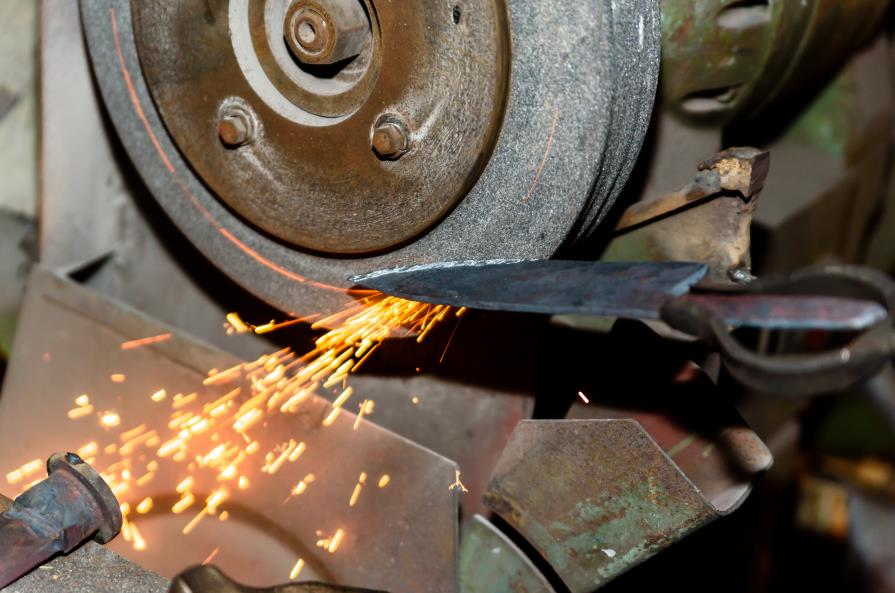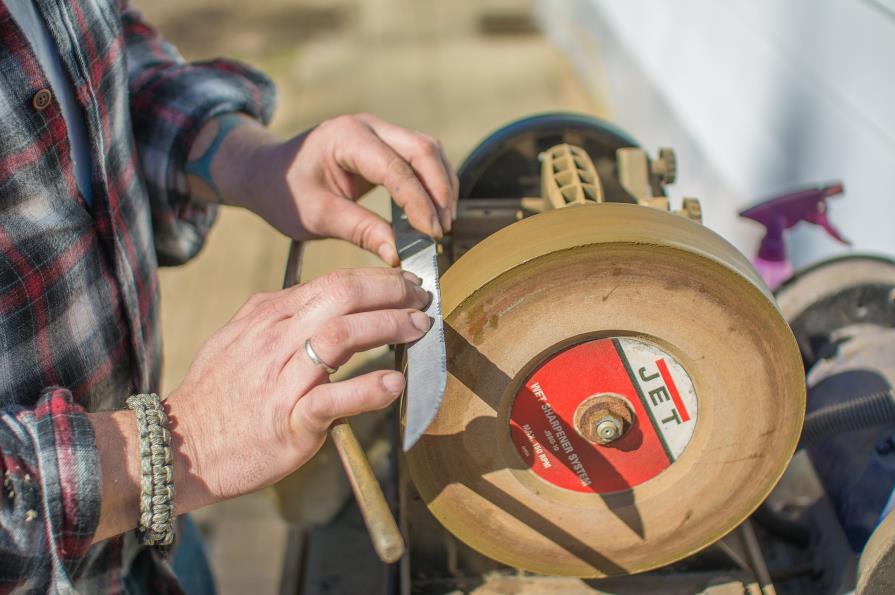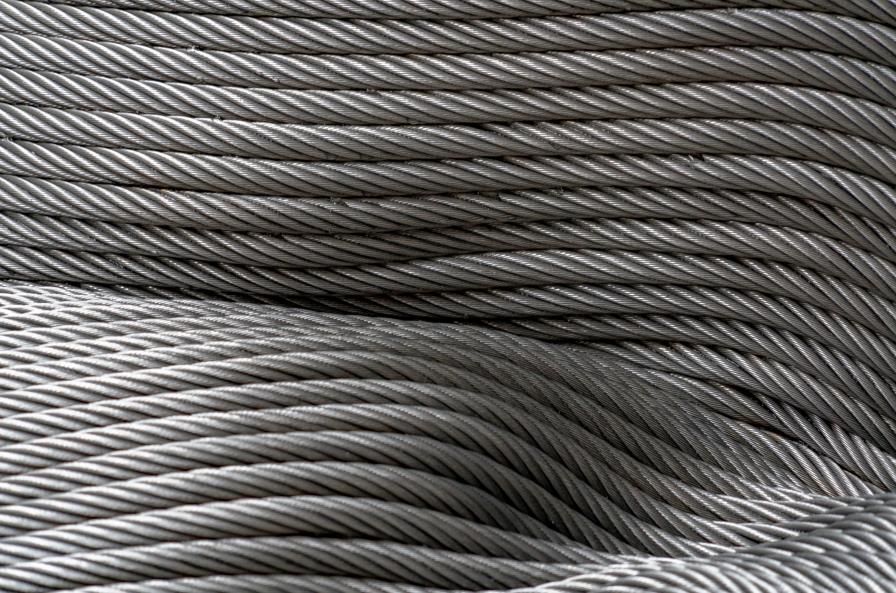440A steel comes from the series 400 steel. A popular and convenient consideration for many, knives made from 440A steel is known for their superb corrosion resistance. 440A steel also has other uses than just knives.
This steel from the 400 series, in particular, found its way into everyday carry knives, kitchen knives, other cutlery, and machine parts. 440A steel is soft enough to cut and machine, allowing multiple utilization for engineers, metalworkers, and blacksmiths.
In this article, we’ll cover the features of 440A steel, compare it with other popular options, and what to expect in a knife made from it.
Table of contents
440A steel composition
In a 440A steel, carbon and chromium are the most prevalent chemical elements. The carbon content of 440A technically categorizes it as high carbon stainless steel, and the 17% chromium provides incredible corrosion resistance. The chromium content in 440A steel is well above a standard kitchen knife, which ranges anywhere from 11 to 15%.
Here is the complete chemical composition of 440A steel.
- Carbon: 0.60 to 0.75%
- The most critical element for any steel, carbon increases strength, hardenability, and overall hardness.
- Chromium: 17%
- Without chromium, corrosion resistance is a troubling achievement for steel. While helping steel resist oxidation and rust, chromium also helps hardenability.
- Silicon: 1%
- Silicon might sound off at first, but all steel has some to a certain extent. It removes oxygen in the alloy, increasing wear resistance while boosting hardness and strength.
- Manganese: 1%
- Manganese is an essential element for steel that decreases brittleness, making it endure more stress without damage.
- Molybdenum: 0.75%
- Similar to chromium, molybdenum increases corrosion resistance, but its most important trait is allowing the steel to harden at a lower quenching rate during heat treatment. This contributes to hardening the steel, increases tensile strength and overall toughness.
- Nickel: 0.50%
- Nickel helps the steel resist corrosion, more specifically, at higher temperatures. It also refines the grain size and increases hardness when the steel begins to cool down.
- Phosphorous: 0.04%
- Phosphorous improves the machinability of the steel by preventing it from clinging to other surfaces.
- Sulfur: 0.03%
- Although sulfur is usually an unwanted element for steel, it helps machinability. However, if it exceeds 0.05% in steel, sulfur does more bad than good, reducing weldability and increasing brittleness.
440A steel as a knife blade material

The above doesn’t mean much if it doesn’t give you the kind of knife you favor, whether it’s a kitchen knife, survival, diving, or any other. Here is what to expect in a knife made from 440A steel.
Edge retention
440A steel has decent edge retention, but it is certainly on the lower end of the spectrum. In the Rockwell hardness testing, 440A steel falls between 55 and 58 HRc, marking it soft steel. However, compared to other steel around this hardness, it will hold an edge for longer thanks to the high carbon content.
Still, the edge retention of 440A steel is not a competition to high carbon steel knives, especially compared to the kitchen knives we have at our store.
Durability
While the edge retention is arguably not feasible, 440A steel has a decent durability. The nickel and manganese help with toughness, giving you something that doesn’t chip easily. 440A steel is incredibly durable under lateral pressure and tends to bend more than chipping.
Since 440A steel is on the softer side, it is more forgiving when using the knife for wrong purposes or things that it shouldn’t be cutting. Not saying that it won’t chip or you won’t see damages to the blade, but it takes a good amount of wrong work to do so.
The hardness of 440A steel clearly isn’t at a level most would want to have in a high-end kitchen knife. Nonetheless, soft steel like this with high carbon content is more durable than any mild steel with less carbon. Overall, it’s a tough steel that can take some beating.
Corrosion resistance
This is perhaps where the 440A steel shines – quite literally. If the steel has 10.5% or more chromium, it is considered stainless steel. 440A steel has considerably more chromium content compared to the bare minimum. The high chromium content makes it an excellent choice for people looking for a blade that won’t oxidize or rust.
If a knife to use outdoors in wet conditions is what you need, 440A steel will be a satisfying choice. Unlike carbon steel knives, which develop a patina over time, you’ll always have a glowing blade.
Sharpening

The hardness of steel doesn’t only determine its durability. It also has a crucial impact on how easy it is to sharpen. Sharpening 440A steel is relatively easy as it isn’t extremely soft. Most certainly, sharpening a high carbon steel knife, whether a kitchen knife or an everyday carry, is easier and takes less effort.
Even though you won’t bump into many problems when sharpening or exhaust yourself as much, edge retention plays a vital role here as well. Your knife not holding an edge for a long duration means you’ll need to sharpen it more often.
With 440A steel, this will be something that you face frequently. It’s crucial to invest in good quality sharpening tools like a basic whetstone, and a honing rod is essential. Otherwise, you might end up shying away from using a 440A steel knife.
Conclusion
Overall, knives made from 440A steel are suitable for people that want higher corrosion resistance in their blades.
The ability to resist corrosion under not feasible conditions undoubtedly makes 440A steel favorable in a kitchen environment. However, edge retention is sought after more than corrosion resistance in kitchen knives. If it were the other way around, we wouldn’t see professional chefs praising high carbon steel knives considering they don’t resist corrosion as effectively.
Despite falling behind in edge retention, 440A steel knives offer durability for most outdoor situations, especially on rainy days and wet conditions. That’s why they make excellent diving knives.
Summary of the pros and cons of 440A steel knives
Pros
- Wonderful corrosion resistance
- Durable enough for most people
- Affordable pricing
Cons
- Falls behind in edge retention
- Not suited for heavy-duty use
- Wear resistance isn’t as great as the corrosion resistance
440A vs. 400c steel

440C and 440A steel are pretty similar in composition except for higher carbon content in 440C. The higher carbon content means 440C will hold a sharp edge better and longer than 440A. As a by-product of this, 440C becomes more susceptible to corrosion. Still, over 17% of chromium makes up for it, and 440C resists corrosion better than most other knives.
Even though there is a slight trade-off between edge retention and corrosion resistance, 440C is somewhat better steel for most people. Additionally, 440C has a higher sulfur content at 0.15% and slightly higher manganese at 1.25%.
There is also the 440B steel. Its carbon content is in between the two, with less than 440C but more than 440A. Other than this difference, both the 440A and 440B are pretty much the same.
440A steel vs. other high carbon stainless steel
There is an abundance of high carbon stainless steel used for a variety of tools and cutlery.
When thinking about high carbon stainless steel other than the 400 series for kitchen knives, there is AUS-10, which is comparable to 440C, CPM SxxV series with carbon content up to 2.30%, and 10xx series with around 1% carbon content. The carbon content is undoubtedly a deciding factor, but it isn’t the only one.
As someone who’s in the market for a kitchen knife, you need to look at the characteristics of a high carbon stainless steel blade as a whole and compare it with your life circumstances. You can then find the most suitable high carbon stainless steel knife. For example, if you’re not up for the care requirements of high carbon steel blades, they won’t be the best pick for you.
Takeaway
440A steel is readily available and utilized for manufacturing a wide variety of tools. Commonly, you will see 440A stainless steel used in diving knives and survival knives. Because edge retention isn’t up to the standards of many cooks, they aren’t as preferred for making kitchen knives. Instead, carbon steel knives like the ones we have at our store are a much better option for most people.
Read more about different varieties of steel and kitchen knives from HDMD Knives Blog.









